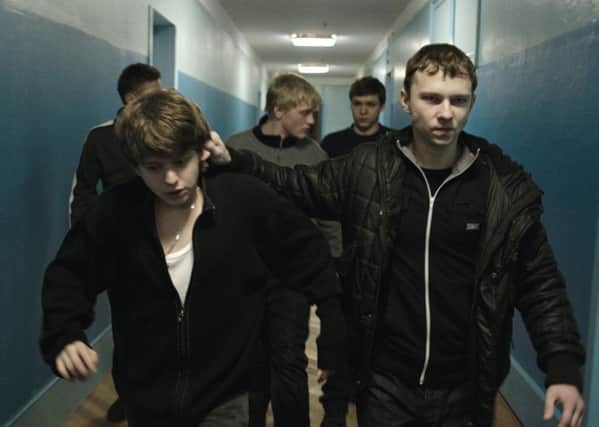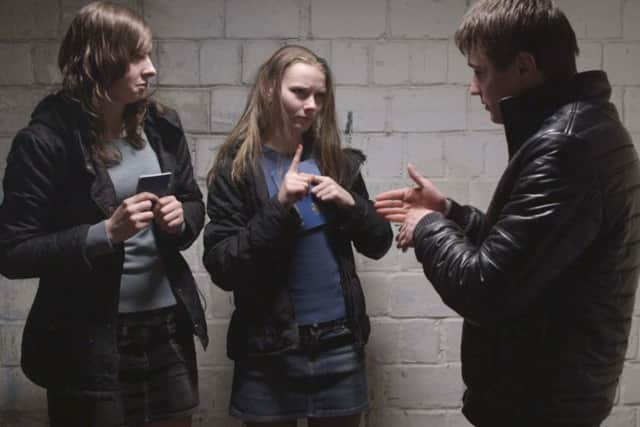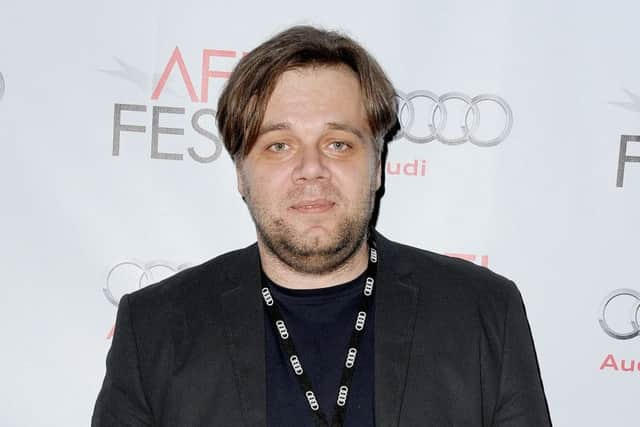The Tribe: the film with no dialogue or music


When the late, great Scottish-American director Alexander Mackendrick taught film at the California Institute of the Arts, he used to implore his students to think about how a film might work with no sound. “Turn the volume off,” he’d say, echoing the ‘show, don’t tell’ maxim of silent cinema, “and a movie should still be at least 70 percent comprehensible.” Film is a visual medium, in other words, and what Mackendrick never forgot was that the storytelling purity of silent cinema should not be discarded simply because a filmmaker has dialogue and music with which to shape an audience’s understanding of the narrative.
Watching Ukrainian director Miroslav Slaboshpytskiy’s debut feature, The Tribe, it’s almost impossible not to marvel at how fundamental this lesson really is. Set in Kiev, in a state-run boarding school for deaf adolescents, the hard-hitting, Cannes-winning film has no subtitles, inter-titles, dialogue, voice-over or explanatory text whatsoever. Instead, its hearing-impaired cast communicates entirely in untranslated sign language. The only sound we’re privy to as an audience, meanwhile, is the ambient background noise of daily life, which, unaccompanied by dialogue, takes on an eerie, alien-like quality.
Advertisement
Hide AdWhat’s remarkable, though, is how compelling – sometimes horribly so – the film proves to be as it follows a new pupil (Grigoriy Fesenko) as he’s initiated into a secret criminal subculture at the school run by some nefarious Fagen-esque members of the deaf community who are exploiting their connections to operate a larger prostitution and sex-trafficking racket. The subject matter – particularly its attendant violence – makes it a tough watch, but the formalistic approach to its portrayal of deafness makes it weirdly absorbing. For non-deaf viewers, not only does the initial disorientation reflect the marginalised status of its characters, it forces us to actively construct the narrative in our heads from what we’re seeing unfold on screen.


“My favourite thing that someone has said about the film is that after five or ten minutes of watching it, his brain started to produce the words,” says Slaboshpytskiy. “It means the audience are co-creators of the film. They must concentrate on the film and pay close attention to the screen, but that helps pull them in.”
On the phone from London, where he’s been doing a day of press interviews, but has also been taking some time to screen the film for a local deaf film club (who all loved it), the 41-year-old director is a cheerful interviewee, apologising profusely for his “horrible English,” which is not horrible at all and frequently throws up accidentally poetic phrases. “It’s like a silent movie from the childhood of cinema,” he says at one point, referring to the way visual language ensures The Tribe can be understood in any country.
As it happens, it is from his own childhood that his fascination with the deaf community stems. Across the street from his school was a boarding school for deaf children and he remembers watching in awe as the students signed with each other in the playground. “It looked like magic,” he says. “It looked like they could communicate on a higher lever. Because they didn’t use spoken words it looked like they could communicate directly with feelings and emotions.”
Later, at film school, he decided it’d be a great idea to make a modern silent film with deaf actors, but it would be the best part of 20 years before he could start to realise that idea on screen. The real starting point was his 2011 short film, Deafness, a powerful drama about a deaf teen being violently shaken down by corrupt cops. The film, which had its Scottish premiere at the 2011 Glasgow Short Film Festival, brought Slaboshpytskiy a lot of attention, but it really functioned as a proof-of-concept for The Tribe.


“It was really a way to test this way of storytelling and be sure it worked for me. And I was able to show the short film to many people who make decisions about financing feature films. They wouldn’t have been able to understand what The Tribe would look like with out that.”
Advertisement
Hide AdThe short also helped him forge a strong connection with the Ukrainian Deaf Society. This was crucial when it came to making the film. “Casting was really difficult because the deaf community don’t really trust people outside of that community,” he explains. “But the Ukrainian Deaf Society really supported us and they let us do the casting at their culture centre, so people felt they could trust us because it was in a safe environment.” Slaboshpytskiy also talked personally to the principals of all the deaf boarding schools in the Ukraine, and used social media to get the word out about auditions across his home country, Russia and Belorussia as well. “We ended up with 300 people attending the casting and found everyone you see in the film.”
Slaboshpytskiy doesn’t sign himself, so had to direct his cast (none of whom had acted before) via an interpreter. More of a challenge was writing the script. Because the absence of dialogue and subtitles was an artistic conceit from the start, he had to make sure the screenplay conveyed the narrative in a way that could be understood by everyone. “I always try to explain that it’s not a film about deaf people, it’s not a film for deaf people, it’s a film for general audiences, but with deaf actors. When I constructed the story I understood that the audience must be able to follow the story, because if they couldn’t it would be very boring for them.”
Advertisement
Hide AdThe grimness of his characters’ plight came from a variety of sources. The school is not based a specific institution, but some of the things his characters experience are rooted in tales that deaf people have told him. However, some of it also came from his brief career as a Nightcrawler-esque news cameraman. “I would sit with a police scanner listening to the radio and if something happened, I would go off and film it and it would go on air,” he says, chuckling at the memory. “I had probably the shortest career of any crime reporter. It was just a few months when I was studying at school.
The Tribe is “really a compilation of different stories,” he says. “Just not all of them were about deaf people.”
This has made him a little nervous about how the film will be received. Although The Tribe has won 37 awards so far, including the critics’ prize at Cannes last year – releasing it across the world (it’s been sold to 40 countries) is a different matter. “When you shoot a film about deaf people, or about a minority in a politically correct world, it can be controversial,” he says. Nevertheless, the fact that he hasn’t made a Children of a Lesser God-style issue movie about deafness does seem to have been appreciated by the deaf community. “In terms of the social message, the fact deaf actors can play different roles in a film that has a lot of international success has been accepted as a victory for deaf society.”
• The Tribe is on selected release from Friday